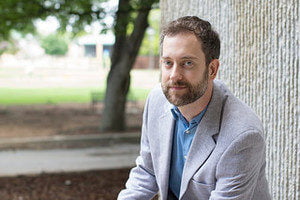
 [Herewith our second post for Applied Ethics April, by Matt King.]
[Herewith our second post for Applied Ethics April, by Matt King.]
‘Death with Dignity’ statutes, as they’re often called, allow terminally ill patients to bring about their own deaths under a very specific set of conditions. The purpose of such laws, made clear by their text and proponents’ arguments, is to empower terminally ill patients, giving them greater control over their deaths. The justification for such legislation is patient autonomy: the right to control how one’s life goes, including how it ends. Such statutes are also thought to mitigate whatever moral objections may attend forms of euthanasia that involve others in bringing about the death.
But ‘Death with Dignity’ statutes are not free of moral problems of their own. Consider Brittany Maynard, who was the inspiration behind the new law in California. A 29-year old terminal brain cancer patient, she moved to Oregon to gain access to its Death with Dignity provision. On November 1, 2014, she took a lethal dose of medication. Yet, while she certainly exercised more autonomy over the circumstances of her death than many, she still died before she preferred. Indeed, she faced a special kind of rational pressure to bring about her own death before she really wanted to. Moreover, given the absence of legal alternatives, she also faced a coercive pressure. If structuring life-and-death choices such that individuals face coercive pressure to bring about their own deaths is morally problematic, especially as a matter of public policy, then Death with Dignity statutes are morally problematic.
To understand the nature of the pressure Maynard faced, one need only examine what she cared about. As her testimony made plain, just prior to her death, she still valued her life. What she disvalued was being incapacitated, dying slowly and painfully from her cancer. Unfortunately, Maynard couldn’t know just when she could be incapacitated in the very ways she judged to be disvaluable. That is, she couldn’t ascertain just how much time she had remaining. This is a standard sort of uncertainty. We often can’t be sure just what the future holds, and often it will matter greatly how things turn out. But for Maynard and others like her, the problem is more pronounced. For Maynard did know for sure that she was going to die soon. As a result, she settled that she would rather die quickly under her own terms than suffer a prolonged death at the hands of her cancer. The difficulty was, however, that en route to a prolonged death, she was very likely to be rendered incapacitated by her frequent seizures. Since the only legally available death under these statutes requires that the patient self-administer the lethal medication, if Maynard was rendered incapacitated, she wouldn’t be able to bring about her own death. As a result, she would be stuck with the prolonged death she sought to avoid.
Maynard’s moral problem was that the very circumstances she wished to avoid were such that were she sure she was in them, she would no longer be able to avoid them legally. Artificially, we might arrange her case like this. If she knew that upon waking up next Thursday, she would experience a massive seizure that rendered her incapable of self-administering, then she could decide to self-administer next Wednesday night. If she self-administered before that, she would be bringing about her death before she had sufficient reason to, by her own lights.
Of course, she couldn’t be confident that an incapacitating seizure wasn’t imminent. So, she couldn’t be confident in planning her death appropriately. Instead, she had to gamble that she would wait long enough that she could still enjoy the life she valued, without waiting too long such that she was stuck with a disvaluable death. Since her worst-case scenario was a drawn-out death, it was rational for her to opt to die sooner rather than later, since the longer she waited, the more likely it became that she wouldn’t be able to self-administer. Thus, Maynard faced rationalpressure to die before she really wanted to.
What was wrong about the pressure Maynard faced? One plausible answer is that it was unnecessary. Notice that her predicament dissolves if she has access to basic forms of euthanasia. If she could have empowered another to bring about her death, then she could have made clear that once certain circumstances obtained, she wished to have her life ended. Importantly, those circumstances could have included her incapacitation. With the requirement that she self-administer gone, she could have confidence that she wouldn’t die until her life was disvaluable and that she wouldn’t have to suffer through those disvaluable circumstances. (Of course, we could then inquire about the moral problem of relying on others to bring about your own death, so I’m not here claiming that there are no moral problems with euthanasia.)
A second answer is that the pressure was coercive. Death with Dignity statutes actually create an additional incentive for patients to bring about their own deaths before they really want to die. Since these statutes create a narrow class of legally allowed self-killings, they incentivize opting for the legally sanctioned method as opposed to some other one. Since such a problem does not persist were forms of euthanasia available, this is some reason to prefer schemes in which euthanasia is available, at least if we are inclined to try to promote patient autonomy and avoid coercion.
One might insist that it is still surely better for those like Maynard to be able to avoid a slow, disvalued death, even if the mechanism of Death with Dignity laws is imperfect. And perhaps such statutes are most justified all things considered. But since their primary justification is typically given in terms of respecting autonomy, there is an unacknowledged conflict in such appeals. It’s hard to see how a law that creates coercive pressure of this sort is the best way of empowering a person. While Death with Dignity statutes may mitigate certain moral risks that pertain to euthanasia, it doesn’t seem that they do as well respecting patient autonomy.


Matt, you’re quite right about the timing issue. Kay Carter (of Carter v. Canada, the ruling that legalized euthanasia in Canada) had to travel to Switzerland to end her life. The Supreme Court of Canada ruled that this violated Ms. Carter’s right to life because she had to die earlier than she otherwise would have if Canada allowed assisted dying. I also agree that limiting to self-administration is too narrow. It discriminates against those who are unable to swallow or move their hands, and people who live in countries that permit both types seem to show a strong preference for physician administration over self-administration.
However, just switching to euthanasia doesn’t solve the problem. Canada allows euthanasia, but people who qualify still face the same issue Maynard did: some people have qualified but have lost capacity before they were able to act. Indeed, in Canada the issue might actually be worse, as there’s no terminal illness requirement. The main issue for this problem is the capacity requirement, not the self-administration one. Some patients lacking capacity could still self-administer (though many could not). So it’s not just a matter of self-administration, though changing that would also be necessary for many cases. Your view applies more broadly than you give it credit for!
Thanks, Eric. You seem to know more about the Canadian system than I do. Do they allow individuals to authorize euthanasia through advanced directives? If so, we could make some headway toward securing the proper authorization, though it wouldn’t help with those who are already incapacitated. In such case, of course, there may be other values that support aid-in-dying beyond autonomy. So I think you’re right that allowing individuals to legally be killed doesn’t necessarily address that full range of values, but I took there to be a distinct worry about self-administering *even if* we had solved concerns about proper authorization *and* independent of separate lines of support (i.e., non-autonomy-based reasons).
Matt,
Thanks for this – a couple of points:
1. The self-administration requirement may (as you say) result in people dying earlier than they wish. But most all assisted dying legislation also results in people dying later than they wish too. The 6-month terminality requirement, as well as the waiting periods between request and prescription, likely result in a good number of people being made to wait to die until a point later than they would otherwise wish. This strikes me as the far greater injustice, in truth, and I’m not seeing any ideal ‘sweet spot’ in terms of what time window to impose on self-killing, whether self-administered or euthanasia. But note that the timing question is distinct from the self-administration question: You could address the latter through legalizing euthanasia but that’s compatible with having various timing restrictions. So the timing and method of administration questions are distinct, though the latter obviously impacts the former ‘on the ground.’
2. US assisted dying laws bar physician administration and active euthanasia period (by physicians and non-physicians alike). But we have some evidence that non-physicians (family members) participate in the drug administration (it’s the norm in groups such as Dignitas in Switzerland for a non-physician professional to assist in drug administration). My guess is that a debate will take place in the not too distant future about whether assistance on the parts of (say) family members should be decriminalized.
Thanks, Michael. I agree that the 6 month waiting requirement is arbitrary and morally risky in its own right. I also agree it may be the worse of the two problems with current legislation. I suppose though that my thought was that it is easier to see the problem of being forced to wait as the state exercising coercive force than in the early case.
For my own part, I’m not sure I really understand the non-assistance requirement. It seems to me overly restrictive, whatever the wisdom of trying to set principled limits on involvement.
I realized I was incomplete in my response to Michael (a consequence of being distracted by watching my alma mater become national champions last night).
There are many aspects of the current Death with Dignity paradigm in the US that we might find issue with. A big one is what Michael highlights — that there are mandatory waiting periods before one can actually access the relevant permission. One dimension of these timing issues is that must be declared terminally ill — i.e., have one’s prognosis of having less than 6 months to live independently certified. We might worry that there’s no reason to think 6 months is some magic number, where inside of that cutoff it will be much more reasonable to favor an earlier death to a later one. Indeed, as Eric pointed out with respect to Canada, it isn’t obvious that a terminal diagnosis should be required. It seems to me certainly an open question whether the values that favor permitting forms of assisted-dying (autonomy, avoiding suffering) apply just as well in non-terminal cases.
So I think Michael’s right that even if we handled the administration worry that I’m trying to highlight here, we’d still have worries remaining regarding timing constraints. We will risk imposing certain burdens on vulnerable persons the more we require them to wait, and the more waiting increases the costs to the person. There may, of course, be good reasons to impose certain waiting periods, though I confess that I don’t see a strong independent justification for them.
We might also object to the self-administration requirement for reasons unrelated to timing. For example, it excludes some patients from accessing the relevant permission. Someone who satisfies all the other criteria but can’t, say, swallow on their own, can’t take advantage of the legal permission. They will be forced to die slowly simply because they cannot actually take the relevant action themselves, even though we may have no doubts as to their competency, terminal illness, etc. To the extent that it is regular practice to discontinue life-sustaining measures for incapacitated patients (e.g., the comatose), for whom we have to rely on either prior consent, our best inference as to their preferences, or consent-by-proxy, we have reason to think there are actually fewer moral objections to assisted dying.
Many of the restrictions present in the current legislation found in the US are no doubt practical compromises to get the legislation passed. It opens a very small permission to legal killings. While there is much to be said in favor of opening much larger permissions, I think it can be easy to miss the ways in which opening even this restricted permission comes at a serious coercive cost.